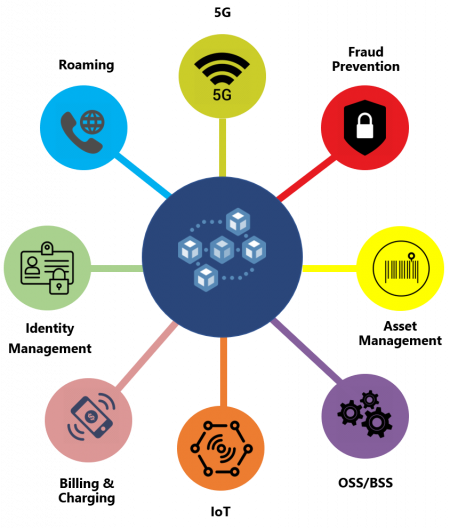There is hardly a day when news related to cryptocurrencies such as Bitcoin does not make headlines. But beyond digital currencies, the applicability of distributed ledger and blockchain is finding its way into a number of different industries including telecommunications.
Distributed ledger technology (DLT) is a shared database that is spread across several nodes or computing devices. Each node replicates and saves an identical copy of the ledger to enable open and trusted exchanges over the Internet. Since it can exist without a centralized authority or server managing it, data quality is maintained through database replication and computational trust that facilitates transparent, verifiable, and secure digital asset transactions with both proof of rights and ownership.
Blockchains are one form of distributed ledger technology. In this scenario, data on a blockchain is grouped together and organized in blocks. The blocks are then linked to one another and secured using cryptography. It is important to keep in mind that not all distributed ledgers employ a chain of blocks to provide a secure and valid distributed consensus.
So how will this technology be applied in telecommunications?
Similar to the path towards virtualization and digitalization – the use of DLT within the telecommunications industry must offer some measureable and quantifiable benefits into current operations as well as enable future opportunities.
Implementation of DLT within the telco environment will likely have the greatest impact on a network operator’s core management systems (OSS/BSS), providing cost reduction through efficiency gains. However, there are a number of areas in which network operators could potentially benefit from the implementation of blockchain as shown.

One application that has garnered a fair amount of attention is with roaming. DLT could reduce both the complexity and cost related to systems integration and authentication across multiple operators and networks. Furthermore, it could enable these transactions to occur in real-time while providing security and trust to establish subscriber’s identity.
Despite its potential, DLT is not without its challenges – most notable is its ability to scale, since every node performs the same tasks as every other node. Other challenges include understanding how DLT fits into telecom regulatory frameworks as well as security- and privacy-related issues.
But perhaps the greatest challenge will be to understand where its use will be most beneficial and offer the greatest opportunities. That is where ATIS is working. To address these challenges, ATIS recently launched the Distributed Ledger Technology Initiative to examine DLT’s role in enabling new business models and revenue streams governed through use of smart contracts.
By identifying practical examples of applications that can benefit from the technology, ATIS is assessing whether a distributed ledger is appropriate for a given use case. Our DLT initiative seeks to fully understand the required trust assumptions, application requirements, involved parties, and technical characteristics such as throughput and latency. It also will consider the establishment of clear rules for governance and how operations on the ledger relate to the broader regulatory environment. The work will also identify key issues where industry collaboration could help advance solutions to enable distributed ledger deployments in service provider networks.
ATIS welcomes participation from subject matter experts and leaders in the distributed ledger field. Your contributions and expertise will help to shape the results. For those interested in joining, and for ATIS members interested in participating in this initiative, please contact Carroll Gray-Preston.
